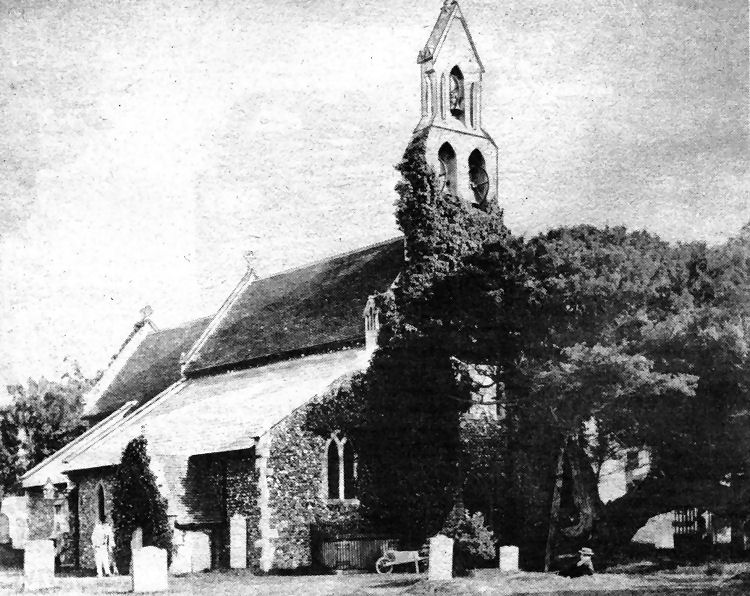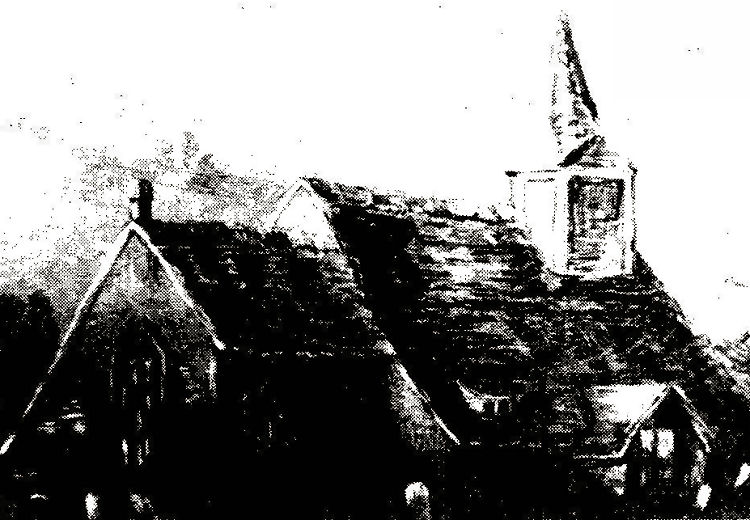Page Updated:- Sunday, 07 March, 2021. |
|||||
 Published in the Dover Express, 17 April, 1981. A PERAMBULATION OF THE TOWN, PORT AND FORTRESS. PART 174.
ROMAN REMAINS During the excavations for building these Buckland Road schools, in 1860, a large quantity of Roman pottery was found, indicating that there had been a pottery manufactory there during the time of the Roman occupation. Also a volcanic conglomerate substance was found similar to the tufa of which the Pharos at Dover Castle is constructed. The Rev Canon Puckle stated that he once found this tufa in its natural state on the side of the highway a little E.S.E. of Buckland Church, above the flint rubble. This tufacious earth on the site of the Buckland Schools seems to have been used for making the rough Roman pottery. Dover Museum was presented with several fragments of pottery, and also twelve urns of various shapes, intact, which were collected during the excavations in building these schools by the Rev Tennison Mosse, as well as a photograph of samples of ancient pottery dug up at the same time and place.
NEW BUCKLAND The houses on the same side of London Road as the schools, between St Radigund’s Road and the vicarage, are all modern. The long street in the rear, laid out by Mr Kingsford in 1871, and called Oswald Road and Place, containing 121 modern houses, bears witness to a large increase to the population of Buckland by 1906. Eric Road is a short cross thoroughfare from London Road to Oswald Road, laid out at the same time, with 16 houses and the workshops of Mr W. G. Lewis.
CHURCH OF SAXON ORIGIN Buckland Church is the only existing parish church in Dover mentioned in Domesday Book, and may be presumed to have existed in the Saxon period. The present church has no trace of Saxon work in any part of it, but, before the Conquest, it belonged to the Canons of St Martin’s. In addition to the Manor of Barton, held by Alwin as a Prebend of St Martin, the Buckland Church lands were held by Godric, the entry of them in Domesday Book being as follows: “In Bocheland, Godric holds one suling, and he Jias her 2 carucates in demesne and 3 villeins and 4 borderers with one carucate and one church. It is worth six pounds. In the time of Edward the Confessor eight pounds.“ Reference was also made to a mill. The unity and continuity of this holding from the time of Edward the Confessor is so clearly demonstrated, that there can be no doubt but that Buckland had a church in the Saxon period; but, what kind of a church? The building as we see it now has been altered so frequently, that very little of the fabric of the Early English period now remains, while the Saxon church has entirely disappeared. That primitive structure might have been of wood, like the majority of Saxon country churches, or it may have been built of chalk blocks and flints dug out of the adjoining hillside, rudely roofed. For the twenty families, bond and free, that made up the population of Buckland at the close of the Saxon rule, a very simple building was sufficient. Some ancient foundations, supposed to have been those of the Saxon church, have been found in the churchyard.
12TH CENTURY CHURCH Buckland was not affected by the early activity in church building which marked the opening of the Norman period. More important places demanded first attention. The great church of St Martin, in Dover, destroyed by the fire ignited by the army of the Conqueror, had to be rebuilt; then the holders of the rich prebendary manors on the eastward cliffs attracted the enthusiasm of the church builders to St Margaret’s, where the grand result of their work is still in evidence. Soon after the rebuilding of St Martin’s in Dover, came the great work of raising St Martin's Priory, the building of the churches of St Peter's and St Mary the Virgin. It was not until these great undertakings were accomplished that the Monks of Dover Priory took a further opportunity of demonstrating their zeal by building a church after their own order, in place of the rude Saxon edifice on their lands at Buckland. They did their Buckland work well, for although there have been alterations and additions, the identical columns and arches which they raised about the year 1196, although some say slightly earlier, still stand to this day. The oldest parts of the church may date back as early as 1130. Some time ago, during restoration work, an early Norman arch was discovered behind plaster in the present south chapel.
MONK MURDERED In the early part of the 14th century the chancel was extended eastwards and the magnificent east window constructed. Unfortunately, however, the old glass has not survived the ravages of time. What did survive until modern times was destroyed during the second world war. The south chapel has been dedicated to St Thomas de la Hale, a monk of St Martin’s Priory who was said to have been murdered in 1295 by French seamen. Following the alterations in the 14th century the church seems to have undergone no major changes until the mid 1850s. In the early days of the Norman church there were arguments over tithes which continued until the 16th century, and there were also disputes with Charlton over boundaries. There have been periods when Buckland has been merged with Charlton, Lydden, River, St Mary’s and Whitfield. In Tudor times the church, along with a good many others, suffered from neglect and did not begin to flourish again for a long, long time. But in the early part of the 19th century the church moved forward rapidly. It was still small, to begin with, however, and the stipend of the minister was lean.

The tiny church of St. Andrew's, Buckland, with ivy taking over at one
end of the building and threatening to muffle the bells, pictured before
the 1,000-year-old yew tree was transplanted and moved 60 ft westwards from
its original site so the church could be doubled in length by the addition
of three bays to the nave and aisles. This incredible feat, which, sceptics
warned, would kill the tree, took place in February 1880. And the gnarled
old tree flourishes to this day. The three church bells were hung in the rather ugly
structure built on the west end of the church when it was extended in the
middle of the 19th century. 
Previous to these alterations the bells were housed in a tall timbered belfry built above the west end of the church, as shown above in a pre-1851 picture. The present belfry was modelled on this drawing.
|
|||||
|
If anyone should have any a better picture than any on this page, or think I should add one they have, please email me at the following address:-
|
|||||
| LAST PAGE |
|
MENU PAGE |
|
NEXT PAGE | |